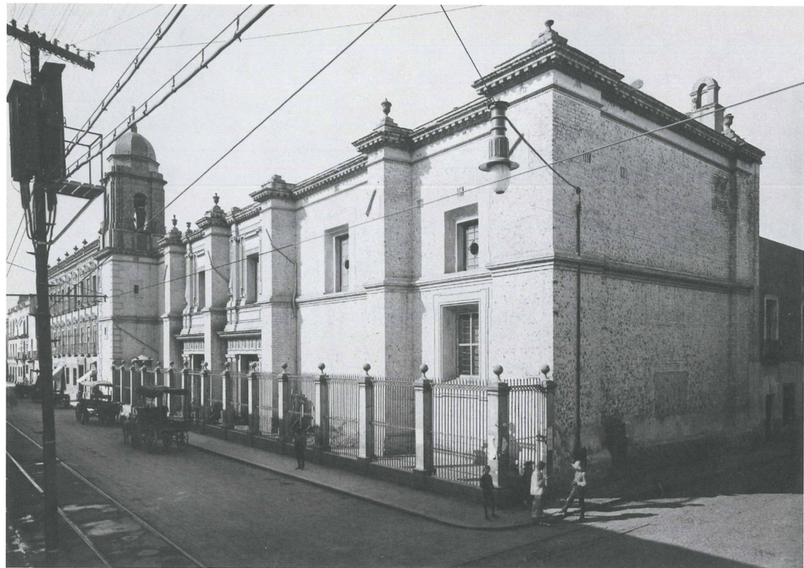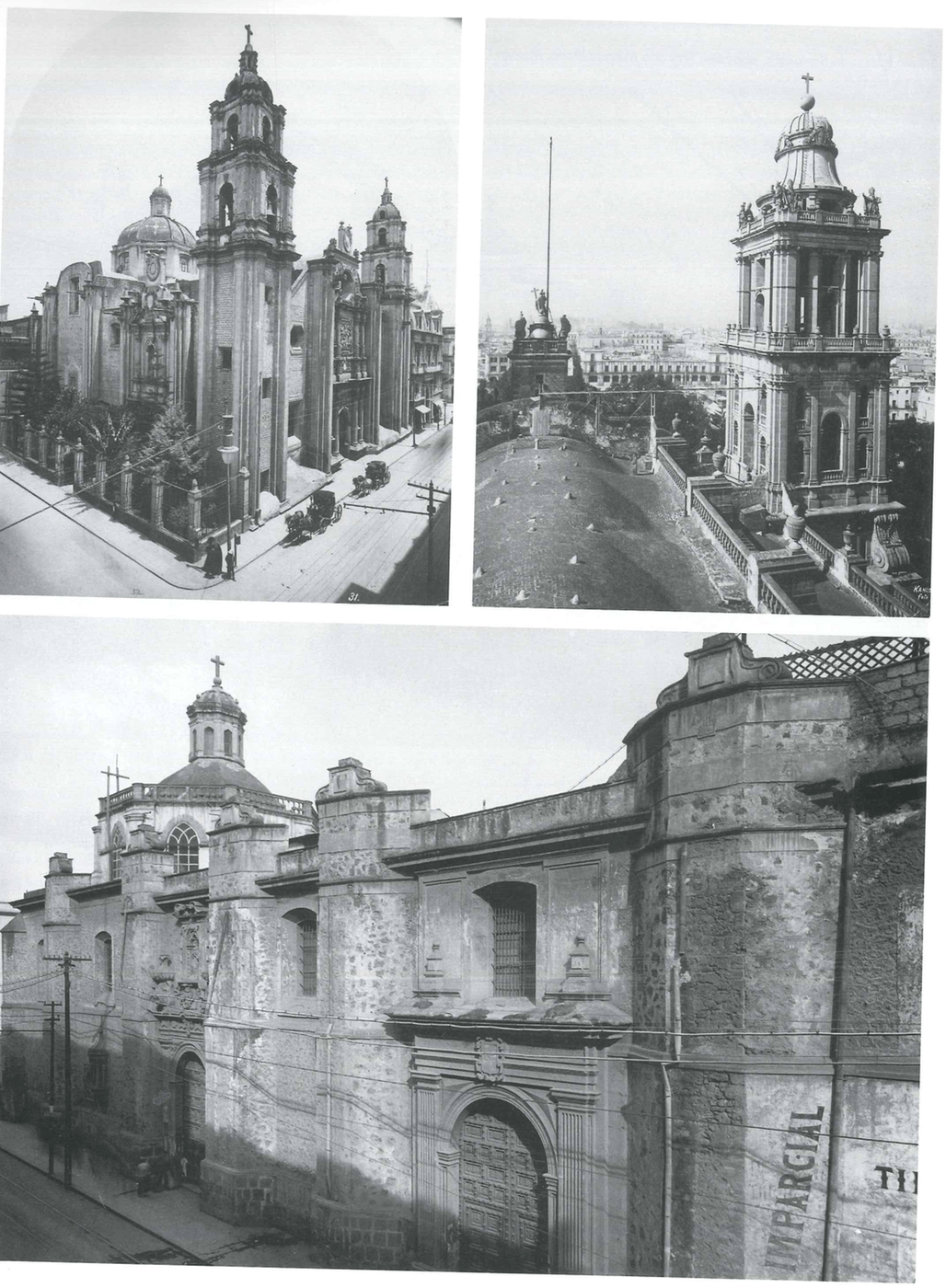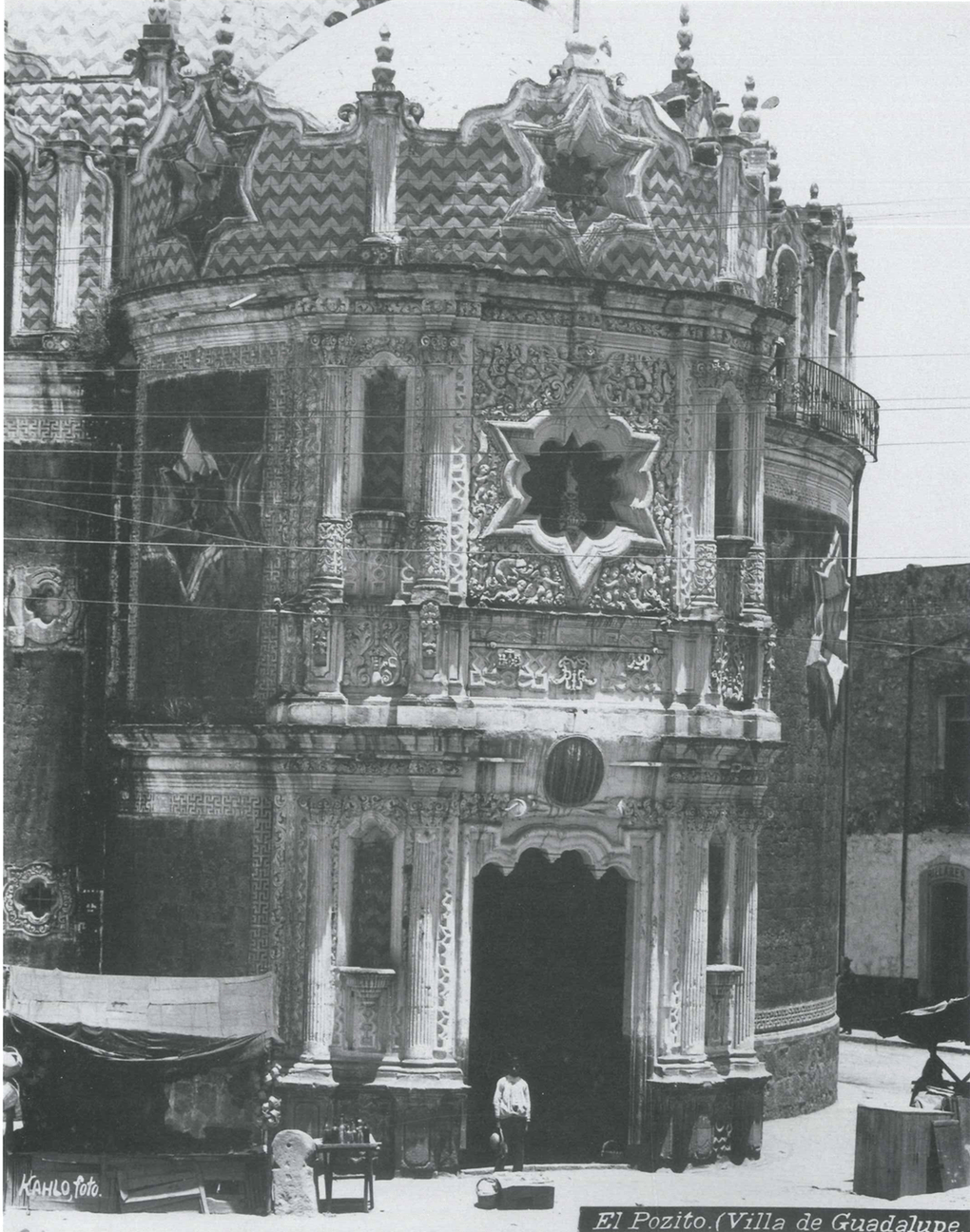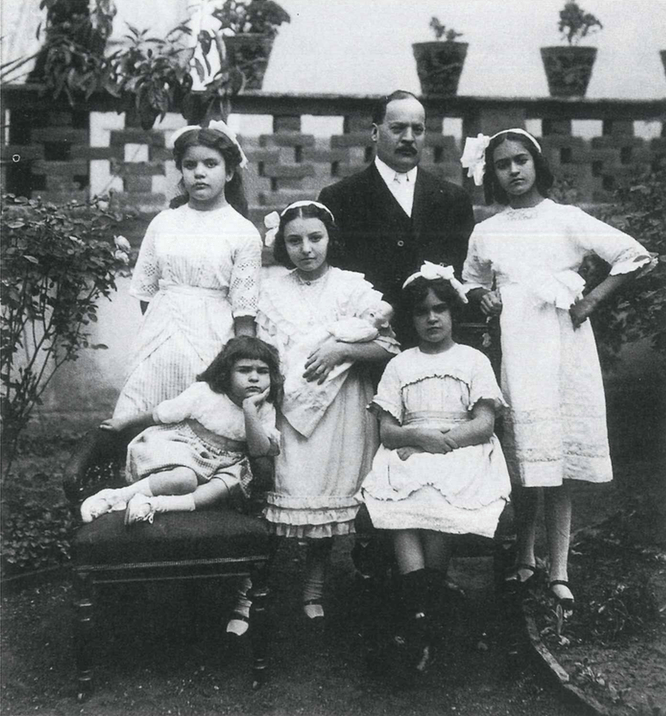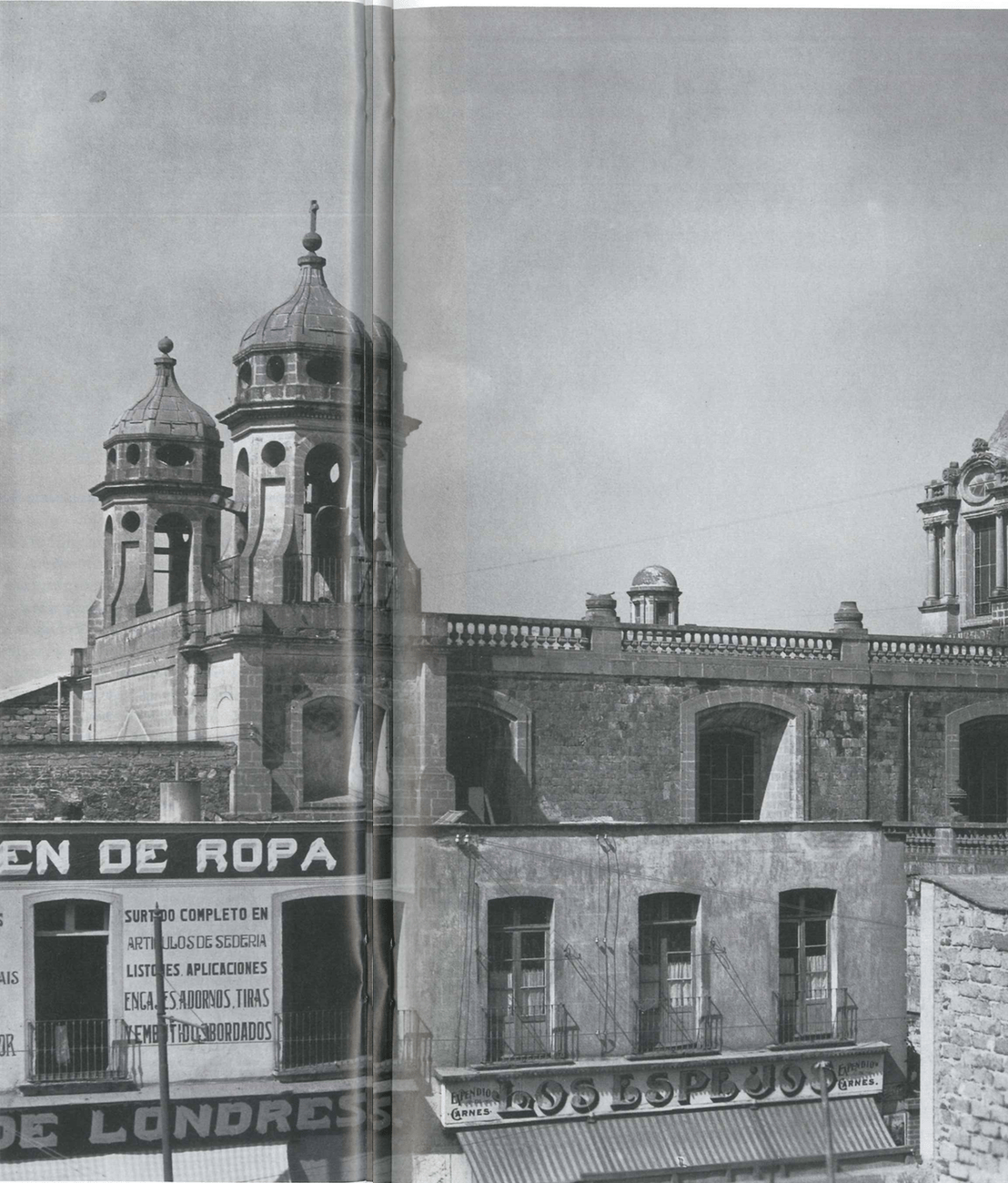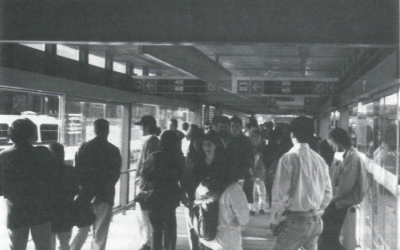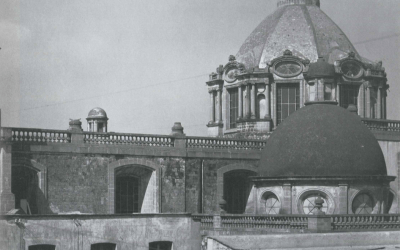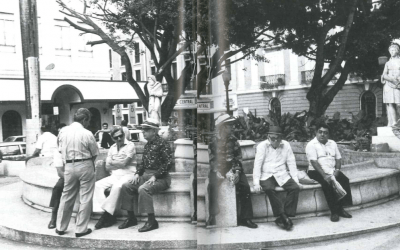Photoessay: Kahlo, Images and Ideas
- Iglesia de Balvanera. Photo courtesy of Harvard College Library.
- La Profesa, East Tower, and Santa Catalina de Sena, Mexico City. Photo courtesy of Harvard College Library.
- Chapel of the Well, “El Pozito.” Photo courtesy of Harvard College Library.
- Guillermo Khalo and family. Photo courtesy of Guillermo Khalo Fotógrapho Oficial de Monumentos.
- Iglesia de San Jose, Mexico City. Photo courtesy of Harvard College Library.
Photographs By Guilermo Kahlo
We set out to build a photo essay exploring the idea of urban markets and showcasing Harvard library resources. Marketplaces understood broadly as sites where not only products, but money, ideas and even people were exchanged. We ended up with churches, an unexpected but logical outcome as these structures are central to the organization of cities throughout the Americas; they are physically and economically linked to the existence of markets, and remain important convening spaces where citizens negotiate their place within the city’s larger structure. This is the story of a market that became a church, a church that became a market, and a collection of works at Harvard relating to Latin America that has yet to be explored.
Lynn Shirey, Widener Library’s Assistant Librarian for Latin America, Spain, and Portugal, issued a call for help through the extensive library system. Harvard’s Fine Arts library responded, inviting us to search their rich photographic archives. As we searched for markets, we stumbled across stark images of churches in Mexico City labeled “Kahlo,” in this case, Guillermo Kahlo. With Frida Kahlo mania at its peak, we simply could not resist the impulse to look further and follow the trail of her father’s work. Our photo essay about urban markets became a story about churches.
The striking Guillermo Kahlo photos are part of a monumental project entitled, Photographic Inventory of Spanish Colonial Church Architecture of Mexico, commissioned by the Porfirio Diaz government to commemorate the centennial of Mexico’s independence. In the tradition of architectural photography, the photos at first seem timeless and unaffected. They are painfully detailed, austere but richly textured, with solid light and shadows, and for the most part void of human presence. A closer look, however, renders a vision of Mexico City that is by no means neutral or strictly journalistic. The images expose the church as a symbol, an element within the ecumenopolis. These are not urban vistas where citizens perform every-day activities, but meticulously crafted views where perspective underscores the primacy of the church. In their contrived loftiness, ironically, the churches become a marketing tool for the Porfirian government to exalt and reclaim the colonial past while promoting a modern vision of the Mexican nation.
Spanish city planning resulted in enduring public spaces throughout Central and South America that placed the church squarely at the center of civic life. This planning tradition promoted a unitary notion of space where social, political and religious activities coexist. Churches and markets developed hand in hand. As people gathered to worship, the city squares and immediate surroundings became a place for commerce and exchange. Many urban plazas actually developed on the site of pre-colonial trading posts or along ancient trade routes. The vantage of the Kahlo photos— taken conventionally from above— emphasizes this tension. By attempting to diminish the environs, Kahlo makes explicit the relation between the church and the commercial surroundings. Despite his best attempts to filter out passerby, merchants and customers, vendor stalls, electric cables and posts, these remain inescapable cues of the times and the impulse for progress that was the backdrop to his work which as some may argue ultimately turned the church into a market.
We set out to write about markets. Along the way we had a serendipitous encounter with Guillermo Kahlo and our gaze irrevocably turned to churches. We were not steered from our subject; we just followed a different route to the ideas we set out to explore. The market place, after all, is not simply a site. Like churches and government buildings, it’s a reflection of the multitude of activities performed by citizens within the larger system of symbols and values imbedded in a city. As in a city, we set off in one direction and found ourselves going in another, only to land up in the same spot. We can only imagine what another excursion to the library will bring.
Neida Jiménez is Program Manager at the David Rockefeller Center for Latin American Studies, where she is also the Latino Studies Initiative Associate.
Related Articles
Bogotá: A City (Almost) Transformed
The sleek red bus zooms out of the station in northern Bogota, a futuristic symbol of an (almost) transformed city. Nearby, thousands of cyclists of all ages enjoy a sunny morning on Latin America’s largest bike-path network.
Editor’s Letter: Cityscapes
I have to confess. I fell passionately, madly, in love at first sight. I was standing on the edge of Bogotá’s National Park, breathing in the rain-washed air laden with the heavy fragrance of eucalyptus trees. I looked up towards the mountains over the red-tiled roofs. And then it happened.
Social Spaces in San Juan
My city, San Juan, is a social city. Its character and virtue are best illustrated and defined by the collective and individual memories of its people and those places where we go to spend time in idleness….

